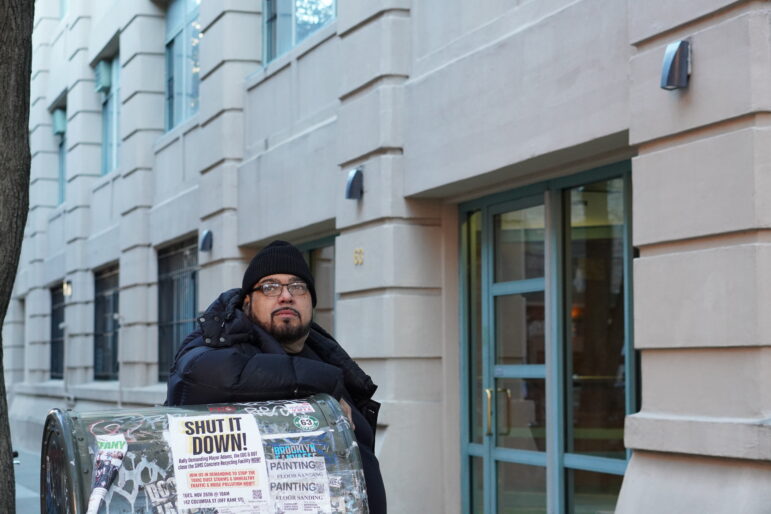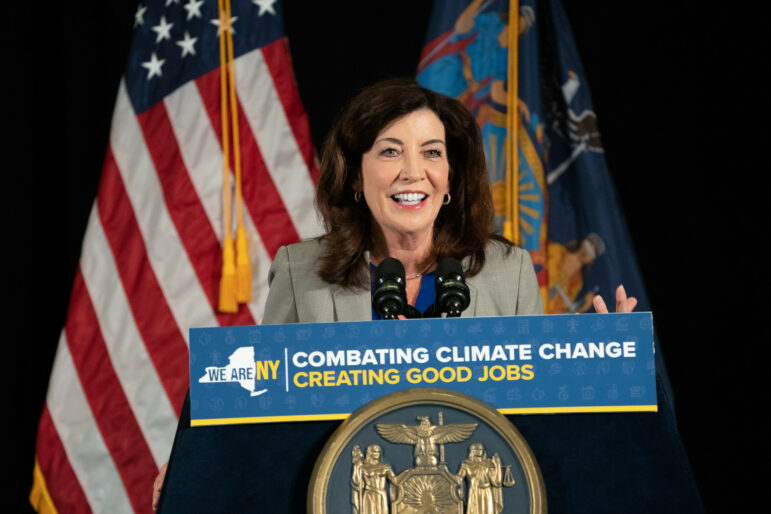Between 2002 and 2010, Mayor Michael Bloomberg’s administration presided over a 46 percent loss in New York City manufacturing jobs, arguably the worst eight-year percentage loss in the city’s history. The U.S. suffered a devastating manufacturing job loss (25 percent) during the same period but New York City still performed worse than the nation overall. Was the loss of almost 64,000 blue collar jobs in New York inevitable? And why does it matter?
It has been a common argument that manufacturing businesses can no longer operate profitably in the U.S., particularly in a high-cost environment like New York City. My experience working with this sector over the last decade has been that a significant amount of job loss was indeed inevitable, particularly in sectors heavily impacted by global competition.
But the Bloomberg administration has also played a role in manufacturing job loss through a combination of neighborhood rezonings, the abandonment of a number of its own attempts to assist the industrial sector, and a lack of high-level focus on the needs of the local economy.
Even today, New York City’s 6,000-plus manufacturing businesses make a vital contribution to the local economy. They serve New York City-based designers, architects, artists, restaurants, construction firms, retailers, film, theater and TV productions, and other businesses. The manufacturing workforce tends to be non-white with limited formal education, but is frequently highly skilled. They live in working-class neighborhoods throughout the city—areas that have generally not been part of the mayor’s electoral base. The lack of political power on the part of manufacturing business owners and workers has undoubtedly played a role in the sector’s struggles.
Discussion of the mayor’s industrial policy has focused to a large extent on the loss of industrial land and buildings. The Bloomberg administration continued and escalated the Giuliani administration’s focus on conversion of areas zoned for manufacturing to residential or residential/commercial uses.
According to research conducted by the New York Industrial Retention Network, 23.4 million square feet of industrial space was lost to approved rezonings between 2001 and 2008, impacting some of New York’s most populated manufacturing districts. Significant portions of Greenpoint-Williamsburg, Long Island City, the midtown Garment Center, and Port Morris in the Bronx were rezoned during this period, mainly for residential development.
Repeated attempts by community groups, labor unions, industrial advocates and others to promote alternative plans that would not place as much pressure on manufacturing clusters met with limited success. We were particularly unsuccessful in reaching any sort of a conceptual common ground with the Department of City Planning. They generally ignored the argument that permitting residential development in industrial areas would lead to conversion pressure because owners of industrial buildings could generate higher returns with residential tenants. The Department of City Planning made repeatedly clear its belief that manufacturing jobs were not integral to New York’s future, while residential development, of course, was. Now as we struggle through double-digit unemployment in many of the city’s low income neighborhoods, the logic of ignoring our industrial sector seems more questionable.
Two realities have emerged as the city’s rezonings have progressed. First, the amount of affordable housing that has been created as a result of the rezoning of industrial areas is very limited.
Second, the city lost a precious opportunity to maintain several flourishing mixed-use districts. Neighborhoods like Greenpoint-Williamsburg and Long Island City were home to a vibrant mix of light manufacturers, artists and artisans, and mixed-income residents. Greenpoint-Williamsburg has seen a steady exodus of hundreds of manufacturing firms and thousands of jobs since the rezoning in 2005. Manufacturers have been pushed out both by land and building sales permitted by the rezoning, and by illegal conversions.
While problematic, the form of market-driven land use planning that exists in New York City is understandable. The last three mayoral administrations have all employed real estate development as a tool for economic growth. In light of this, it has been noteworthy that the Bloomberg administration did put time and energy into developing the basis of an industrial policy, which included some protection from development pressures.
But the city never built on these early steps and has largely walked away from its own efforts. The end result has been that an ostensibly business oriented administration has never capitalized on the economic opportunities presented by light manufacturing/artisan clusters.
To its credit, the Bloomberg administration has maintained and solidified a true working waterfront in Southwest Brooklyn. The city also undertook a lengthy analysis and mapping of New York’s industrial districts. In 2005, the Bloomberg administration created 16 Industrial Business Zones (IBZs). The IBZs were deemed off limits to residential conversion, and were specifically designated to mitigate some of the effects of neighboring rezonings. A Mayor’s Office of Industrial and Manufacturing Businesses was created (MOIMB), housed in the Department of Small Business Services. Local development organizations within the IBZs received funding to provide services to industrial firms. The administration also began to tackle problems relevant to industrial sub-sectors, such as the future of the midtown Garment Center.
All of these steps represented an actual attempt to establish a citywide industrial infrastructure. But the city did not build on the foundation which it had created. The head of MOIMB never became a commissioner-level position which limited its strength within the administration. The IBZs never received legislative protection, meaning they can be eliminated by a future mayor. Nor were they protected from potentially conflicting uses, such as big box retail and supermarkets. And the industrial development incentives offered by the Department of Small Business Services and other city agencies remained greatly limited in the eyes of manufacturers, in part because they are mainly tailored for businesses that own their space. Most manufacturers, like most New Yorkers, are tenants.
And today, as one IBZ coordinator said to me, the IBZs are “on the shelf”. They have seen their city funding slashed as the city’s fiscal situation has deteriorated. At the same time, the Mayor’s Office of Industrial and Manufacturing Businesses has lost most of its dedicated staff.
As the IBZs and the Mayor’s Office of Industrial and Manufacturing Businesses (barely five years old) lost attention and resources, the City’s Economic Development Corporation was assigned the task of determining what the future of New York’s industrial policy will be. To this end, EDC has conducted a considerable amount of qualitative and quantitative research, repeatedly engaging industrial businesses and the entities that work with them.
Manufacturing owners have conducted tours of their facilities for city officials, and have visited city agencies to explain what they need to continue to create jobs and economic activity. The administration has also been urged to examine strategies employed by other cities like L.A. and Chicago to retain their industrial sector. Numerous demonstrations have been made of the economic linkages between local manufacturing firms and the creative sector, and manufacturing firms and other small businesses. We have pointed to highly successful endeavors like the Mayor’s Office of Film and Television, which demonstrate the power of concerted mayoral support.
What has been so striking about the amount and depth of information that has been gathered by city staff is the lack of concerted action taken in response.
The administration has shown interest in sectors like fashion and food, which have strong connections to manufacturing. But there is no coherent industrial policy in New York City today, a global center for innovation and creativity. Urban manufacturing in 2010 is the product-development arm for small businesses, creating everything from high-end garments to one-of-a-kind furniture. This product development capacity erodes more every day, and our local economy suffers for it.
Manufacturing workers and the businesses that employ them have been pushed to the sidelines of our urban economy. Let us hope that the city learns the economic value that they can offer before it is too late.







